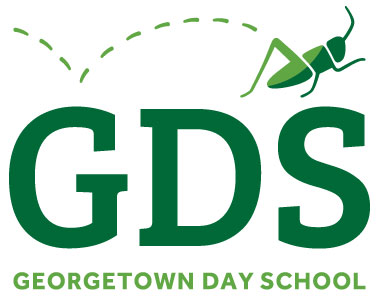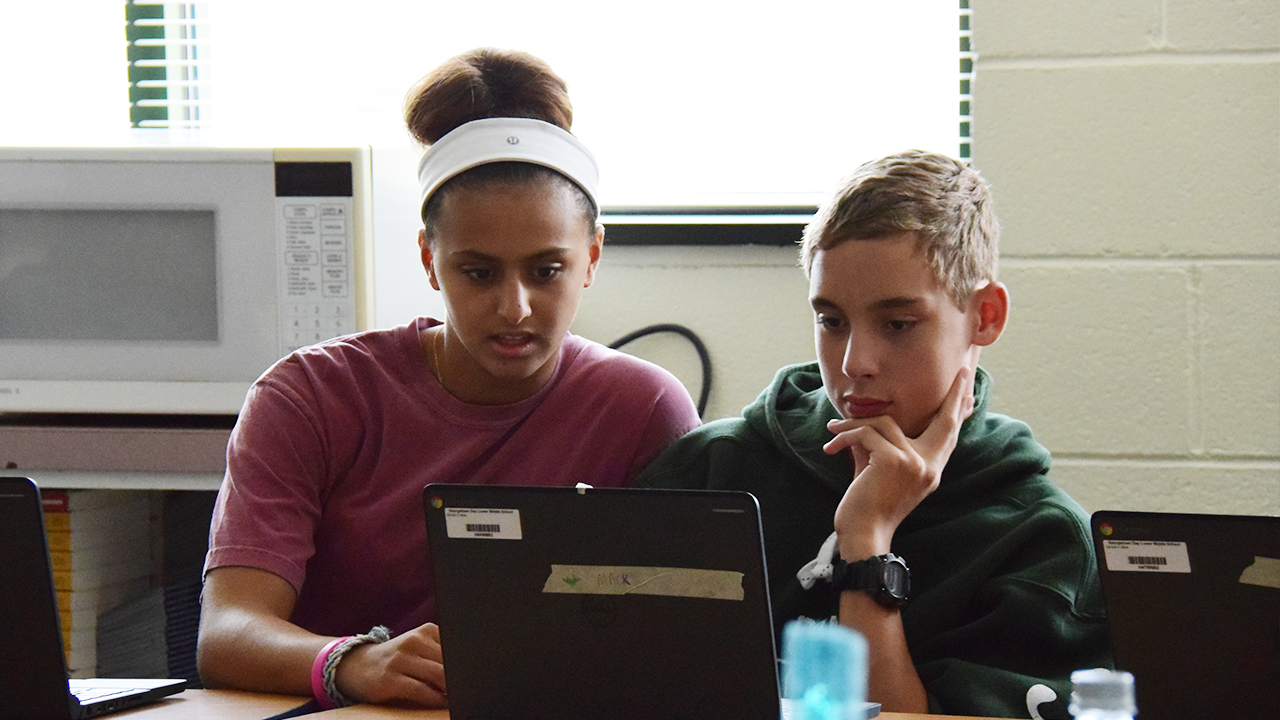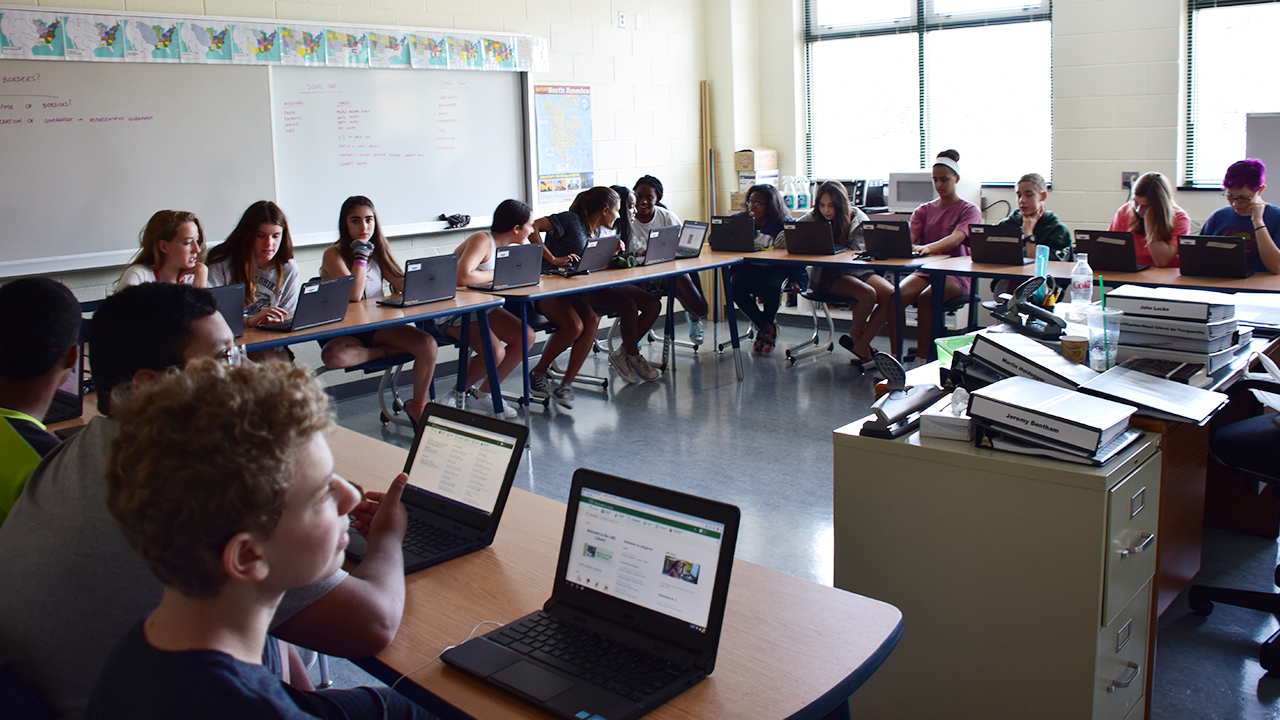“So Tim, what’s with all of these Chromebooks?” is a question I’ve been asked a few times by parents and families of our Lower/Middle School students over the last 18 months.
The overarching driver for progressing in this direction as a school has not been simply to put more computers in the hands of our students, but rather to level an uneven playing field and normalize access to online resources so that our students can effectively, efficiently, and actively grow their learning in three key areas: digital citizenship, hard technology skills, and personal responsibility. The Chromebooks and iPads in the hands of your children are there so that they can actively engage with a broad and compelling set of new learning resources and experiences that can extend their school experience well beyond the walls of a traditional classroom. To wit, I’d love to stop calling this a “1 to 1” device program, and instead call it what it is, a “1 to world” program.
Digital Citizenship
“Digital citizenship” is often defined as the norms for appropriate and responsible use of technology. In a student’s life, these norms cover a broad range of topics, from developing age-suitable definitions of “appropriate” as it relates to online behavior, to understanding what one’s online presence says about oneself, to knowledge of legal and ethical issues related to media consumption and sharing online, and many more.
GDS introduces digital citizenship to its students first through an in-class sharing of the acceptable use policy from our Parent-Student Handbook. This year, we are beginning to partner with LMS students and teachers to develop grade and/or division-specific versions of that policy to broaden understanding of the policy and to create an introductory learning opportunity for our students in digital citizenship. While developing a school-wide digital citizenship curriculum is certainly a known growth area for many schools (GDS included), having reliable access to devices makes the teaching and learning of digital citizenship a logistical possibility for all of our students.
Technology Skills & Revolutionary Content
If teaching digital citizenship brings knowledge to our students about how to appropriately engage with technology, we also want to empower our students to do incredible things with technology. That empowerment comes through teaching a variety of technology-related skills to our students. This would include demonstrating critical thinking and logic application by learning computer programming, communicating effectively to an authentic, global audience by producing rich multimedia content, and augmenting one’s ability to construct a persuasive argument by incorporating and manipulating data sets.
Regarding content, I’ve said in numerous presentations over the years that I believe the emergence of high-speed access to the internet is the equivalent to the Guttenberg printing press in terms of providing a fundamental, worldwide, quantum leap forward in the way information is created, captured, and shared. Making use of such a revolutionary resource for teaching and learning opportunities is dependent on a few things, including a dependable network connection, teachers experienced and excited to leverage specific resources for their students, and reliable access to devices.
Be it exploring a professionally-curated exhibit of the role of African American women in the Civil Rights Movement hosted in the Google Cultural Institute, participating in a hands-on STEM unit via Project Lead the Way’s cross-disciplinary modules, learning information literacy via understanding how to correctly use and cite online sources in JSTOR, or developing coding and programming skills using an online IDE like Pencil Code, we’re providing iPads and Chromebooks to our students to allow them non-competitive, equitable, front-row access to these and other revolutionary learning experiences for both skill development and content mastery.
Personal Responsibility
As our students matriculate, providing opportunities for them to think, work, and learn in interdisciplinary environments will best prepare them for a connected world, where compartmentalized knowledge can be less valuable than an ability to understand problems and pursue solutions that cross subject areas. One place I see that happening in our Lower/Middle School is in the development of personal responsibility as a holistic offshoot of putting devices into our students’ hands.
As an example, in addition to teaching coding, deep online research, and multimedia production, our sixth grade advisory team created space last year to develop a system for tracking damage and loss incidents with student-issued Chromebooks. They engaged in this development with each other as a team, and then brought it to their students—not as a disciplinary measure, but rather as a tool to develop a sense of personal accountability with each student for her device. Incorporating a written component to that tracking system gave the students an opportunity to practice their communication skills in writing about individual incidents. The technology+responsibility+composition synergy became a holistic, cross-disciplinary “teaching moment” to what had originally presented itself as a pragmatic hurdle.
As our teachers and students continue to work together with their Chromebooks and iPads, I look forward to seeing what new learning experiences develop, what resources are employed, and what connections are made to the world around them. Please keep an eye out in your grade level communications for updates throughout the year on the fun and innovative things that are taking place in our “1 to world” programs.




